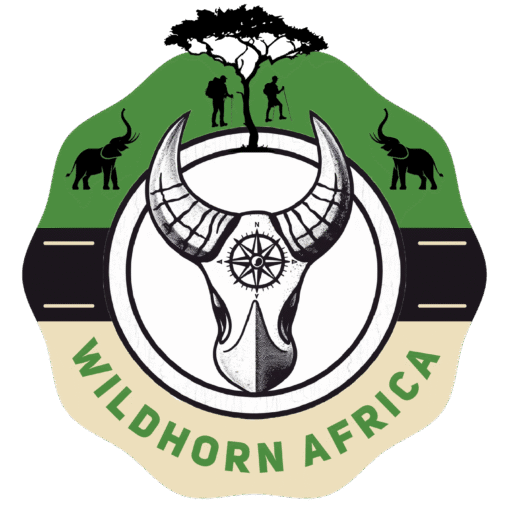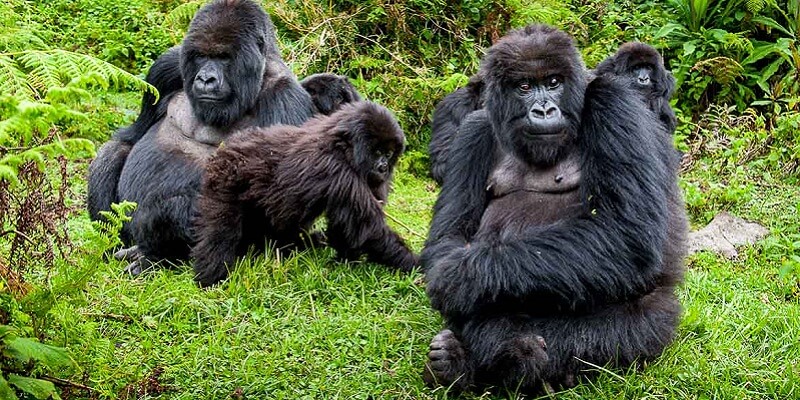Which Regions of Uganda Are Best for a Safari? | Complete Uganda Safari Region Guide 2026
Which Regions of Uganda Are Best for a Safari?
There is something profoundly stirring about Uganda — a country that lies quietly at the heart of Africa yet pulses with the raw energy of life in its purest form. Described by Winston Churchill as the Pearl of Africa, Uganda captivates travelers not merely with its beauty but with its diversity. From snow-capped mountains and endless savannahs to dense equatorial rainforests and shimmering lakes, the country unfolds like a natural symphony — wild, vibrant, and untamed. Yet one question often lingers in the mind of anyone planning a journey here: Which regions of Uganda are best for a safari?
The answer, much like Uganda’s landscapes, is layered and rich. Every corner of this East African gem holds its own secret — a distinctive ecosystem, a unique wildlife story, and a culture woven deeply into the rhythm of nature. Safaris in Uganda are not confined to one region or experience. Instead, they stretch across the country, each destination revealing a different dimension of Africa’s wild soul.
This detailed guide explores Uganda’s most remarkable safari regions, painting a picture of what makes each one special — from the golden grasslands of Murchison Falls to the misty mountains of Bwindi, the open plains of Kidepo to the crater valleys of Queen Elizabeth. It is a journey through geography and emotion, designed to help travelers understand where Uganda’s safari heart truly beats.
The Western Region: The Crown Jewel of Uganda’s Safari Circuit
If there is a region that encapsulates Uganda’s essence, it is the western region — a vast, scenic sweep of land that stretches from the Great Rift Valley to the borders of Congo and Rwanda. This part of the country is the undisputed epicenter of Uganda’s safari experiences, offering an extraordinary mix of wildlife, mountains, forests, and lakes.
The western region is home to the country’s most famous parks: Queen Elizabeth National Park, Bwindi Impenetrable National Park, Kibale Forest National Park, and Mgahinga Gorilla National Park. Each park brings its own magic, and together they form the backbone of Uganda’s wildlife tourism.
In this region, travelers find not just safaris but soul-deep experiences — gorilla tracking in ancient rainforests, cruising past hippos along the Kazinga Channel, hiking through tea plantations, and watching the sun rise over volcanic ridges. The diversity of terrain is astounding, making western Uganda a must for anyone seeking a holistic safari experience.
Queen Elizabeth National Park: The Heart of Diversity
Nestled between the Rwenzori Mountains and the rolling escarpments of the Rift Valley, Queen Elizabeth National Park stands as Uganda’s most visited and biodiverse park. Its 1,978 square kilometers host over 95 species of mammals and more than 600 bird species, making it one of Africa’s richest ecosystems.
The park’s landscapes shift dramatically — open savannah plains in Kasenyi, lush forested gorges in Kyambura, volcanic crater lakes in Katwe, and the iconic Kazinga Channel, where thousands of hippos and crocodiles bask in the sun. Game drives reveal elephants, lions, buffaloes, leopards, and Uganda kobs, while boat safaris offer an intimate look at aquatic life and birdlife.
Perhaps the park’s most fascinating feature is found in its southern sector — Ishasha, known for its tree-climbing lions. Watching a pride of these majestic cats lounging in fig trees against the backdrop of the savannah is an image that stays forever etched in memory.
Queen Elizabeth’s combination of accessibility, wildlife density, and scenery makes it the beating heart of Uganda’s safari circuit, ideal for both first-time and seasoned visitors.
Bwindi Impenetrable National Park: The Realm of Gorillas
To venture into Bwindi Impenetrable National Park is to step into a world older than time. Its thick, tangled vegetation hides some of the last remaining mountain gorillas on Earth — gentle giants that share over 98% of their DNA with humans. Located in southwestern Uganda, Bwindi is one of Africa’s most biologically diverse forests, a UNESCO World Heritage Site, and a sacred sanctuary of life.
Gorilla trekking here is a transformative experience. The journey through steep trails, mist-laden valleys, and dense forest leads travelers to a moment of connection that transcends words — locking eyes with a silverback in his natural habitat. This single encounter defines Uganda’s global fame and explains why Bwindi is considered one of the world’s most spiritual wildlife destinations.
Beyond gorillas, the region around Bwindi reveals rural Uganda in its purest form. Local communities in Buhoma, Ruhija, and Nkuringo offer cultural tours, craft markets, and performances that reflect the harmony between people and the forest. The region’s lodges, from luxury sanctuaries like Sanctuary Gorilla Forest Camp to eco-retreats like Clouds Mountain Gorilla Lodge, enhance the sense of immersion and serenity that defines Bwindi.
Kibale Forest National Park: The Primate Capital
Just north of Queen Elizabeth lies Kibale Forest National Park, a lush realm of towering trees and echoing calls that has earned its title as the Primate Capital of the World. With 13 primate species, including over 1,500 chimpanzees, Kibale offers one of the best chimpanzee tracking experiences in Africa.
The park’s chimpanzee tracking excursions are deeply engaging. Guided by experienced trackers, visitors follow trails through the forest to find families of chimps grooming, foraging, and communicating in ways remarkably similar to humans. The optional Chimpanzee Habituation Experience, allowing up to four hours with these intelligent creatures, is one of Uganda’s most intimate wildlife encounters.
Kibale is also home to red colobus monkeys, grey-cheeked mangabeys, and L’Hoest’s monkeys. Birdwatchers delight in species like the green-breasted pitta and the African grey parrot. The nearby Bigodi Wetland Sanctuary complements the park’s offerings with community-run ecotourism projects that merge conservation with livelihood.
Mgahinga Gorilla National Park: Where Gold Meets Silver
At the far southwestern tip of Uganda, nestled against the borders of Rwanda and Congo, lies Mgahinga Gorilla National Park — a small but profoundly beautiful park where “gold meets silver.” This poetic phrase refers to the coexistence of golden monkeys and mountain gorillas, both endangered species that inhabit the Virunga volcanic range.
Mgahinga’s landscape is striking — three dormant volcanoes rising dramatically from the earth, their slopes cloaked in bamboo and montane forest. Trekking here is an exhilarating adventure through raw volcanic terrain, with opportunities to meet the Nyakagezi gorilla family or observe troops of golden monkeys in their natural playground.
The park’s cultural richness adds depth to the experience. The Batwa Trail, guided by members of the indigenous Batwa community, reveals ancient forest traditions and survival skills that have been passed down for centuries. Mgahinga may be smaller than Bwindi, but its charm lies in its solitude and spectacular views across the Virunga chain.
The Northern Region: Uganda’s Untamed Frontier
In contrast to the lush forests of the west, northern Uganda offers an entirely different safari landscape — one that feels remote, rugged, and timeless. This region, less frequented by mass tourism, is where travelers encounter the true wilderness of Africa, untamed and unspoiled.
Dominated by Kidepo Valley National Park, the north represents Uganda’s frontier spirit. Here, the land stretches endlessly under wide skies, punctuated by distant mountain ranges and acacia-dotted plains. Wildlife thrives in abundance, yet the feeling of isolation gives it an authenticity that few African parks can match.
Kidepo Valley National Park: The Hidden Eden
Kidepo Valley National Park is often hailed as Uganda’s most magnificent yet least-explored park. Tucked away in the far northeast, near the borders of South Sudan and Kenya, Kidepo is a sanctuary of solitude. Its remoteness — a full-day drive or a short charter flight from Kampala — ensures that it remains untouched by crowds, offering one of Africa’s last true wilderness experiences.
The park’s 1,442 square kilometers are home to over 75 species of mammals and more than 470 bird species. Lions, cheetahs, elephants, giraffes, buffaloes, zebras, and ostriches roam freely across the Narus and Kidepo valleys. Herds move in rhythmic harmony against backdrops of distant mountains and the haunting beauty of dry riverbeds.
Unlike many parks where sightings are guided by radio communication, Kidepo’s encounters feel spontaneous — raw and personal. The park’s remoteness heightens every sense; the silence of the savannah is broken only by the calls of birds and the rustle of wind through the grass.
Cultural experiences enrich the safari further. The Karamojong people, pastoralists who live near the park, welcome visitors into their manyattas (homesteads), sharing traditions that have endured for generations. Kidepo is not just a park; it is an immersion into Africa before modernity — pure, vast, and profoundly humbling.
The Central Region: The Gateway to Uganda’s Wild Heart
The central region, anchored by Kampala and Entebbe, serves as the gateway for most travelers entering Uganda. It is from here that safaris begin and end, but this region offers more than just logistical convenience. It holds cultural depth, historical significance, and easy access to several wildlife reserves and lakes that introduce travelers to Uganda’s natural rhythm.
Lake Mburo National Park, located a few hours southwest of Kampala, provides the perfect introduction to Uganda’s wildlife scene. Though smaller in size, it offers an intimate and scenic safari experience characterized by rolling hills, open acacia woodlands, and tranquil lakeshores.
Lake Mburo is known for its large populations of impalas, zebras, elands, and hippos, as well as its diversity of birdlife. The absence of lions allows for walking safaris, horseback safaris, and boat rides — activities that offer a more personal and peaceful connection with the landscape.
Beyond wildlife, the central region encompasses the cultural and spiritual soul of the nation. Kampala’s vibrant energy, Entebbe’s botanical gardens, and the nearby Ngamba Island Chimpanzee Sanctuary offer pre- or post-safari relaxation and education in conservation. The region’s accessibility, combined with its variety, makes it an ideal start or end point for any safari journey.
The Eastern Region: Adventure and Scenic Beauty
Uganda’s eastern region reveals another layer of the country’s diversity. It is a land of adventure, culture, and dramatic landscapes, where the Nile begins its legendary journey and mountains rise from fertile plains. While not traditionally known as a classic safari region, eastern Uganda adds dimension to the safari experience by offering outdoor activities, geological wonders, and cultural richness.
At the heart of this region lies Jinja, famously known as the Source of the Nile. This picturesque town has evolved into Uganda’s adventure capital, offering white-water rafting, bungee jumping, kayaking, and boat cruises on the Nile. While not a safari in the traditional sense, Jinja’s wildlife-rich riverbanks host abundant birdlife, monitor lizards, and occasional hippos, blending adrenaline with natural charm.
Further east, Mount Elgon National Park offers a different kind of wilderness — one of altitude, flora, and waterfalls. The extinct volcano, once Africa’s highest mountain, now hosts lush montane forests, caves, and scenic hiking routes. The Sipi Falls, cascading dramatically from the mountain slopes, form one of Uganda’s most breathtaking landscapes.
For travelers seeking variety beyond the savannah, the eastern region adds a refreshing contrast to the traditional safari circuit — proving that Uganda’s appeal lies not only in its animals but also in the adventure of discovery.
The Southern Region: Lakes, Landscapes, and Leisure
Southern Uganda, bordering Rwanda and Tanzania, complements the country’s safari diversity with a serene blend of water, hills, and community experiences. It is a region of tranquility and reflection, perfect for those seeking to unwind after intense wildlife adventures.
Lake Bunyonyi, meaning “place of many little birds,” is perhaps the most scenic lake in Africa. Surrounded by terraced hills and dotted with 29 islands, it provides a tranquil retreat for travelers. The lake’s calm waters are free of bilharzia and crocodiles, allowing safe swimming and canoeing. Sunset cruises, village visits, and hiking trails complete the peaceful rhythm of this southern haven.
Nearby, Lake Mutanda offers similar serenity, with views stretching toward the Virunga Volcanoes. The region’s lodges, often perched on ridges above the lakes, offer some of the most photogenic settings in Uganda. It is here that travelers reflect on their journeys — where the sounds of nature replace the roar of adventure, and the magic of Uganda lingers quietly in the air.
Why Uganda’s Regional Diversity Defines Its Safari Greatness
Uganda’s greatness as a safari destination lies not in a single park but in the harmony of its regions. Each one tells a different story — from the primal heartbeat of Bwindi’s forests to the cinematic vastness of Kidepo’s plains, from the calm waters of Lake Mburo to the exhilarating currents of the Nile. Together, they form a mosaic of experiences that no other country replicates in such compact geography.
The journey between these regions also deepens the safari experience. As travelers move across Uganda, they witness the transition from rainforest to savannah, from volcanic peaks to crater lakes, and from vibrant urban life to untouched wilderness. This constant evolution of landscape and culture is what transforms a Ugandan safari from a holiday into an odyssey.
Conclusion: Where the Journey Becomes the Destination
The question of which regions of Uganda are best for a safari does not yield a single answer — because Uganda itself is the answer. Each region offers a chapter of an extraordinary story, and the true beauty of the journey lies in reading them all.
Whether one chooses the west for its gorillas and primates, the north for its raw wilderness, the center for its cultural pulse, the east for its adventure, or the south for its serenity, Uganda delivers a safari that feels deeply personal and profoundly moving.
For those ready to turn this vision into reality, the best way to explore the regions of Uganda is through a well-crafted itinerary by experts who understand its rhythms and secrets. Travelers are encouraged to book their Africa tours and safaris with WildHorn Africa, a trusted company renowned for its deep regional knowledge, ethical practices, and passion for authentic experiences. With WildHorn Africa, every route, every region, and every encounter becomes part of a larger story — one that defines the true spirit of the Pearl of Africa.





 WildHorn Africa – Authentic and unforgettable tours across Africa, guided by local experts who know the land, wildlife, and culture best.
WildHorn Africa – Authentic and unforgettable tours across Africa, guided by local experts who know the land, wildlife, and culture best.


